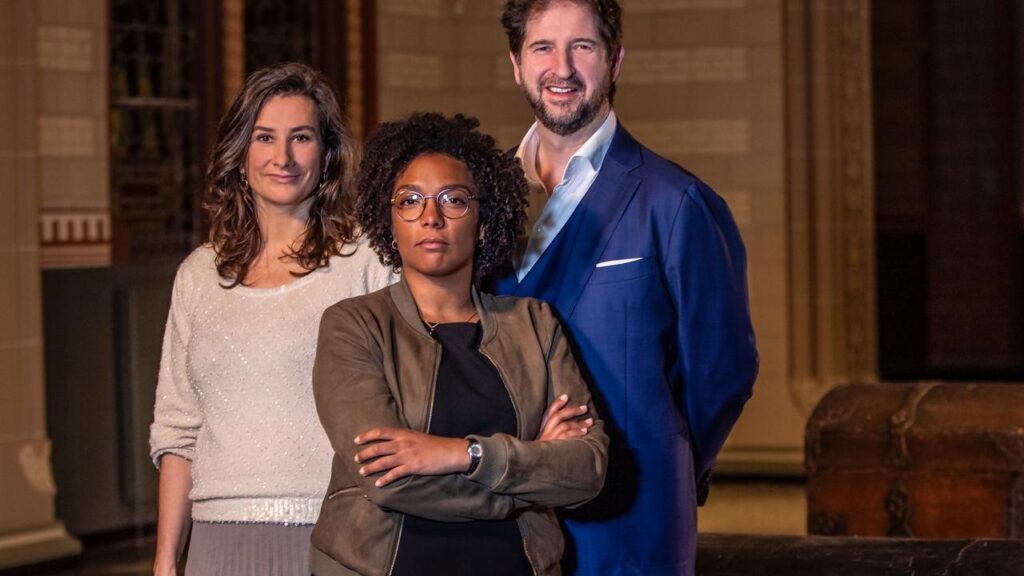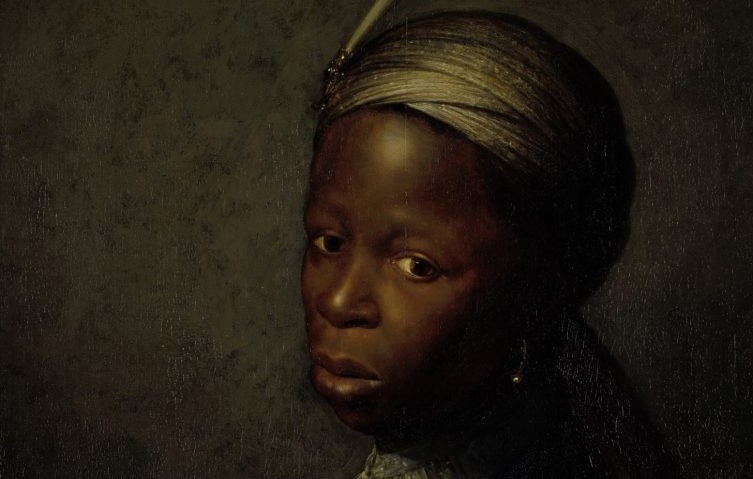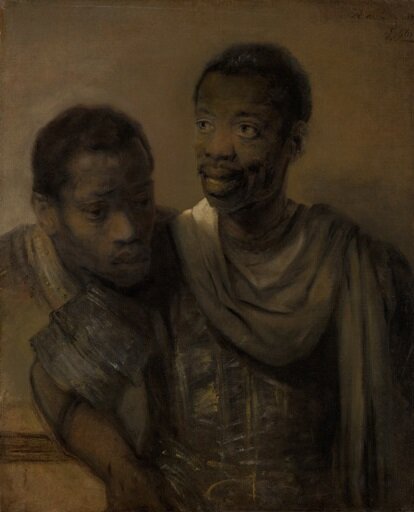The exhibition ‘HIER. Zwart in Rembrandts tijd’ was presented in The Rembrandthuis from 6 March until 11 September 2020. The funding was done by Fonds 21, The Mondriaan Fonds, The Prins Bernard Cultuurfonds, Ten Hagen Fonds, VSBfonds and the Nachenius Tjeenk Stichting. Originally the exhibition was scheduled until the 31st of May, but due to COVID-19 it was extended until the 6th of September. The exhibition was divided over two large rooms, where attention was mostly focused a few paintings. The paintings were complemented with modern works including black persons and seventeenth century documents about black people who lived in the neighborhood of Rembrandt.

Guest-curator of the exhibition was Stephanie Archangel. She worked together with a team from the Rembrandthuis. Everything was centered around a question which intrigued Archangel for years: were there ‘normal’ images, portraits, of black people like herself, painted by Dutch painters? Portraits were the protagonist was black, not just the submissive person at the edge of the scene. The answer was yes: Rembrandt has made a few of these paintings. Not many, but still there were some. And in her search for these images she found more painters which have depicted black people. Some of these paintings are already displayed at museums around Europe, like ‘boy with a turban’ from Gerrit Dou.

The Prins Bernardt Cultuurfonds stated on their website: ‘Het Cultuurfonds ondersteunde de tentoonstelling omdat deze een nieuw en breed perspectief biedt, waarin inclusiviteit en meerstemmigheid een blijvend onderdeel vormen van het Rembrandthuis.’ See https://www.cultuurfonds.nl/project/hier-zwart-rembrandts-tijd. But is it really a new perspective? Black people are actually not that uncommon on Dutch paintings. And is showing a black person on a painting a form of inclusivity? Definitely not on itself. But by showing depictions of black people as protagonists of the portrait, the approach of Archangel was innovative and inclusive. It was innovative because it challenged current misconceptions and stereotypes. For example, the misconception that all seventeenth century paintings in which black people figured depicted them as servants. Or the misconception that there were no black people in seventeenth-century Holland at all. Or the stereotype that most of the black people that were there must have been slaves or servants. The truth is that probably most of them were, but we cannot retrieve this information with one hundred percent certainty. And then again some of them weren’t. But it’s not even about what they were, it is about how they were depicted.
Even more challenging and problematic is the modern use of the phrase ‘black people’, or the almost instinctive association between black people and the concept of slavery. Because as the exhibition shows, most black people who figured in portraits were not at all depicted in a ‘slavery way’, but rather in an exotic oriental fashion, like the boy with the turban. This fascinating realization, that perhaps the seventeenth-century painters who depicted the black people had no slavery associations at all about them, but just saw them as neighbors or friends, is for me the essence of what Archangel meant when she talked about ‘een soort menselijkheid’ (a kind of humanity) that she experienced when she first saw the painting ‘Twee Afrikaanse mannen’ in the Mauritshuis. See https://www.trouw.nl/nieuws/herkenning-in-het-museum-dat-had-ik-nooit-ervaren~b50d82ca/.

If this realization, about the associations of the painters, is established in many visitors, the exhibition has reached its goal in my opinion. However, one detail struck me as a missed opportunity. Because by looking at the exhibition from a public historian-perspective, one could advocate that in the media-coverage too little attention has gone into the creative process of the exhibition. As an exhibition which is part of a nation-wide initiative for more inclusivity and diversity in museums (see https://www.maandvandegeschiedenis.nl/page/17626/5-hier—zwart-in-rembrandts-tijd), certainly much energy must have gone into approaching the creative process from a shared authority point-of-view. Only for me this was nowhere to be found on the internet, nor was it mentioned on text-sign in the exhibition itself, apart from the standard colophon (as far as I can remember). How long did the preparation of the exhibition take? About which topics emerged controversy? Over which end-results is still no unanimous agreement? In a press-statement the Rembrandthuis mentioned Raul Balai and Brian Elstak as two of the designers of the project. See https://www.rembrandthuis.nl/wp-content/uploads/2020/01/persbericht-hier.-zwart-in-rembrandts-tijd.-museum-het-rembrandthuis-amsterdam-1.pdf. Unfortunately, I could not find their names in other media-coverages. As undoubtedly much effort has gone in bringing all the perspectives from people like Raul and Brian together, transparency about this could have added-up to the overall understanding of and empathy for the project.
Reviews in the media were almost entirely positive. Many agree to the relevance of the exhibition when it comes to depicting black people ‘as they were’, in the seventeenth century. Many emphasize the uniqueness of this period, 1620-1660, before black people were increasingly depicted in a caricatural fashion, in an attempt to legitimize slavery. And where the physical exhibition is now closed, due to COVID-19 there still is a digital exhibition in which the approach and goals of the project are revealed. In this way the exhibition can keep making impact, as people who are inspired by the story can forward their friends to the mini-documentary: https://www.youtube.com/watch?v=yTRI161zY_g. In a time where the emancipation of black people is in full focus and development, exactly this focus can sometimes make humans forget to see their black co-humans as just humans. In this frame, the project by Archangel counters precisely this phenomenon. Seventeenth century painters who made portraits of black people often saw them as just humans. As friends, neighbors or as citizens of Amsterdam. This view gave the paintings it’s unique kind of humanity. A natural, self-evident kind of humanity, which in 2020 is still the best that we can aim for together.
Patrieck de Haan